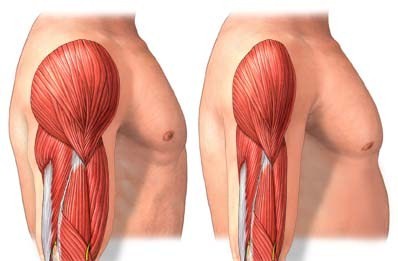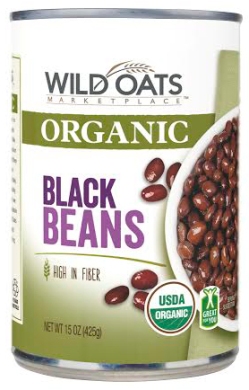 This is the most exciting thing I’ve read all day. Compounds in apple peels and green tomatoes could help preserve muscle as we age, staving off sarcopenia. The compounds are so effective that isolated, concentrated forms were shown to stimulate muscle growth in mice and human muscle cells.
This is the most exciting thing I’ve read all day. Compounds in apple peels and green tomatoes could help preserve muscle as we age, staving off sarcopenia. The compounds are so effective that isolated, concentrated forms were shown to stimulate muscle growth in mice and human muscle cells.
Here’s the recent study. The compound in this one is tomatidine, found in green tomatoes:
Systems-Based Discovery of Tomatidine as a Natural Small Molecule Inhibitor of Skeletal Muscle Atrophy, The Journal of Biological Chemistry, 9 April 2014
Here’s the researchers’ prior study. The compound is ursolic acid, found in apple peels:
mRNA Expression Signatures of Human Skeletal Muscle Atrophy Identify a Natural Compound that Increases Muscle Mass, Cell Metabolism, June 2011
Of note, red tomatoes contain little tomatidine:
“In humans, dietary tomatidine comes from ingestion of alpha-tomatine, which is abundant in green tomatoes but typically decreases by approximately 99% as tomatoes ripen. … It is also interesting that alpha-tomatine is higher in organically grown tomatoes compared to conventionally grown tomatoes.”
Not only do these compounds reduce muscle atrophy and stimulate muscle growth, but they also reduce body fat (adiposity):
“Like other interventions that stimulate skeletal muscle hypertrophy, tomatidine also decreases fat. The mechanism by which tomatidine decreases fat is not yet known.”
And…
“Importantly, ursolic acid’s effects on muscle were accompanied by reductions in adiposity, fasting blood glucose, and plasma cholesterol and triglycerides.”
 The apple peel compound may also inhibit cancer growth:
The apple peel compound may also inhibit cancer growth:
Ursolic Acid Inhibits Proliferation and Induces Apoptosis of Cancer Cells In Vitro and In Vivo, Journal of Biomedicine and Biotechnology, 2011
Here’s a graphic that accompanied the ursolic acid (apple peel) study. The red and green parts show how researchers identified ursolic acid. Pretty creative! The purple part, the telling part, shows that giving mice ursolic acid promoted muscle growth:

Wikipedia names these food sources for ursolic acid:
“Including apples, basil, bilberries, cranberries, elder flower, peppermint, rosemary, lavender, oregano, thyme, hawthorn, and prunes. Apple peels contain large quantities of ursolic acid and related compounds.”
Here’s a press release from University of Iowa on the tomatidine study and a few excerpts:
Green Is Good; Natural Compound From Green Tomatoes Increases Muscle, Protects Against Muscle Wasting, 9 April 2014
“As unlikely as it sounds, green tomatoes may hold the answer to bigger, stronger muscles.
Using a screening method that previously identified a compound in apple peel as a muscle-boosting agent, a team of University of Iowa scientists has now discovered that tomatidine, a compound from green tomatoes, is even more potent for building muscle and protecting against muscle atrophy.
In a new study, published online April 9 in the Journal of Biological Chemistry, Christopher Adams, associate professor of internal medicine and molecular physiology and biophysics in the UI Carver College of Medicine, searched for a small molecule compound that might be used to treat muscle atrophy. He zeroed in on tomatidine using a systems biology tool called the Connectivity Map, which was developed at the Broad Institute of MIT and Harvard University. Adams discovered that tomatidine generates changes in gene expression that are essentially opposite to the changes that occur in muscle cells when people are affected by muscle atrophy.
After identifying tomatidine, Adams and his team tested its effects on skeletal muscle. They first discovered that tomatidine stimulates growth of cultured muscle cells from humans.
“That result was important because we are looking for something that can help people,” Adams says.
Their next step was to add tomatidine to the diet of mice. They found that healthy mice supplemented with tomatidine grew bigger muscles, became stronger and could exercise longer. And, most importantly, they found that tomatidine prevented and treated muscle atrophy.
Interestingly, although mice fed tomatidine had larger muscles, their overall body weight did not change due to a corresponding loss of fat, suggesting that the compound may also have potential for treating obesity.
An attractive aspect of tomatidine is that it is a natural compound derived from tomatoes. It is produced when alpha-tomatine, which is found in tomato plants and in green tomatoes in particular, is digested in the gut.
Adams and his team previously used this same research strategy to discover that ursolic acid, a compound from apple peels, promotes muscle growth.”
They didn’t find that just eating green tomatoes and apple peels (compared to eating a concentrated supplement) would prevent muscle wasting, but they didn’t negate it either. Unfortunately, it’s the isolated, concentrated compound that has value for businesses, not the food. And a compound that can do all this would be ripe for the capitalist’s picking. Sure enough:
“We are now very interested in the possibility that several food-based natural compounds such as tomatidine and ursolic acid might someday be combined into science-based supplements, or even simply incorporated into everyday foods to make them healthier.”
To that end, Adams and his colleagues have founded a biotech company called Emmyon, “to accelerate this research and translate it to people.”






